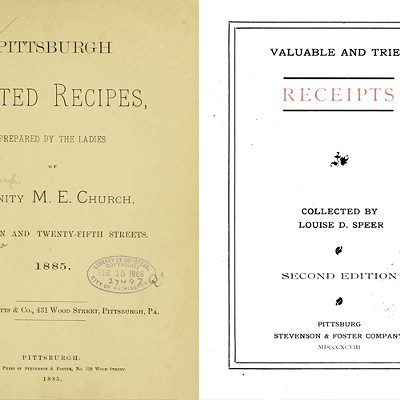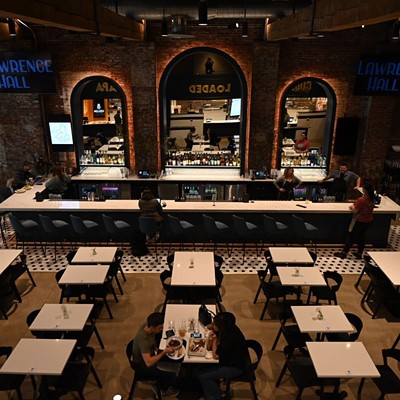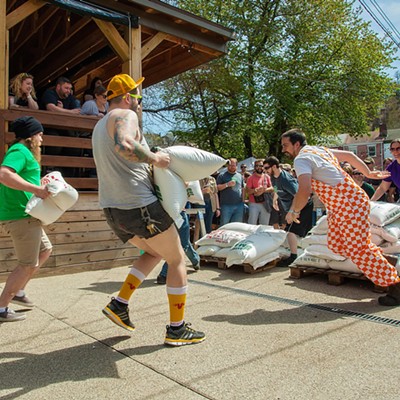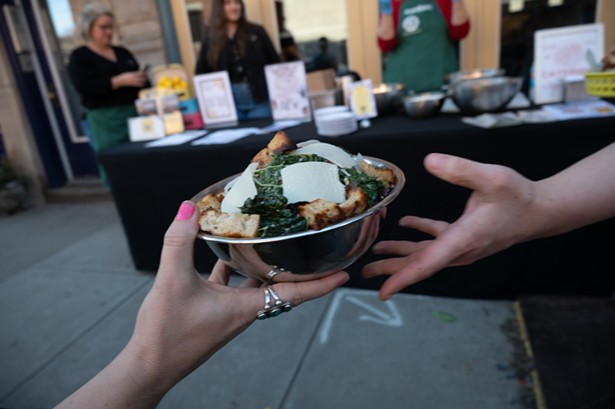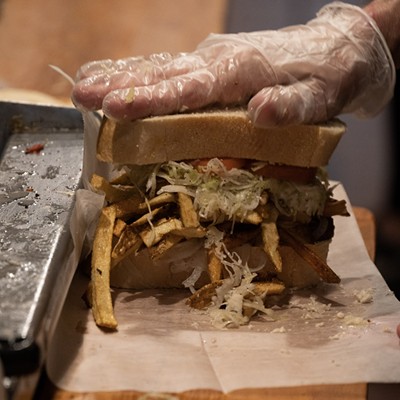It’s the nearing the end of Pennsylvania’s maple-sugaring season, so put down the Log Cabin and spring for the real stuff. Nearby Somerset County has a collection of maple camps, but closer to the city in Fox Chapel, there’s a small educational operation run by Scott Detwiler, an environmental educator for the Audubon Society at Beechwood Farms Nature Reserve. For the last 18 years, Detwiler has been tending the property’s “sugar bush,” or grove of maple trees, and teaching groups about the process of making maple syrup.
Long before the arrival of Europeans, Native Americans here and throughout the Northeast were producing maple sugar to flavor their food and as a valuable item for trade. (Sugar is more shelf-stable and can be reconstituted into syrup.) Colonists learned the technique from Native Americans and used maple sugar in place of cane sugar, which was then an expensive luxury.
According to the American Maple Museum, maple sugar was also promoted by Quakers and abolitionists as an alternative to slave-produced cane sugar. “Until the late 1800s, it was the main source of sugar here,” says Detwiler. “When cane sugar was industrialized, it became more affordable, and it took over the sugar market. That’s when they switched over to maple syrup.” According to the Somerset (N.J.) County Park Commission, the United States peak-production year for maple syrup was 1860, with 6.6 million gallons produced. The United States Department of Agriculture reports 2017 syrup production at 4.27 million gallons.
Producing maple syrup is a study in patience. A maple tree that’s large and mature enough to tap is about 40 years old. A tap is made by drilling a small hole in the trunk of the tree and funneling the sap into covered buckets; in modern operations, sap drips through plastic tubing hung from multiple trees into bags for efficiency. “You have to put a new tap hole in every year. The reason is, the wood stops carrying sap in that particular area around the tap. I won’t get sap out of it, if I tap too close to an old tap,” says Detwiler. The tree will heal over time and, barring unlikely infection, isn’t harmed by tapping. Larger trees can accommodate three to four taps, also called spiles, a season.
Syrup can be made from any type of maple, but sugar-maple sap, at 98 percent water and two percent sugar, produces the best syrup because it has the highest sugar content. More sugar means less time spent cooking the sap down. Since cooking takes up the majority of the production process that time saved can make a difference. “When it comes out of the tree, it looks like water because that’s mostly what it is,” says Detwiler. “It takes somewhere in the neighborhood of 40 gallons of sap to make one gallon of syrup, if you’re using sugar maples.” Other less-ideal varieties of maples, like the box elder, require as much as 70 gallons of sap to create one gallon of syrup.
A higher volume of sap requires a longer cook time, and the flavor suffers as a result. It takes about eight hours of cooking to take a batch of sap to syrup, and care must be taken not to burn it during the process. Detwiler uses a large wood-fired stove at Beechwood Farms. “It’s a specially shaped stove, like a maze. The sap goes back and forth [across the cook top]. You can add the sap in this corner, and it will cook and move along. When it comes out the opposite corner, it will be maple syrup,” says Detwiler. This smaller-sized stove will accommodate the amount of syrup drawn from five to 50 taps. Beginner’s commercial stoves are typically eight feet long and are able to accommodate a larger volume. They also are more likely to use propane or diesel to heat the syrup, fuels which are easier to regulate than wood. After it’s cooked, the syrup must be filtered through a cloth sleeve, and then it’s ready for bottling.
In Pennsylvania, the tapping season runs from January to the end of March; in more northern states, tapping can extend into May. Tapping for syrup requires a specific set of weather conditions. The temperature must be below freezing at night and above freezing during the day, and then freeze again in order to get the sap flowing in the dormant tree. Once spring comes, the tree will use the sap for growth, and tapping won’t be effective. “It used to be nobody tapped much before late February. But with the crazy weather patterns we have now, you have to tap earlier and earlier, just to be there in case you get a run [of sap],” says Detwiler.






